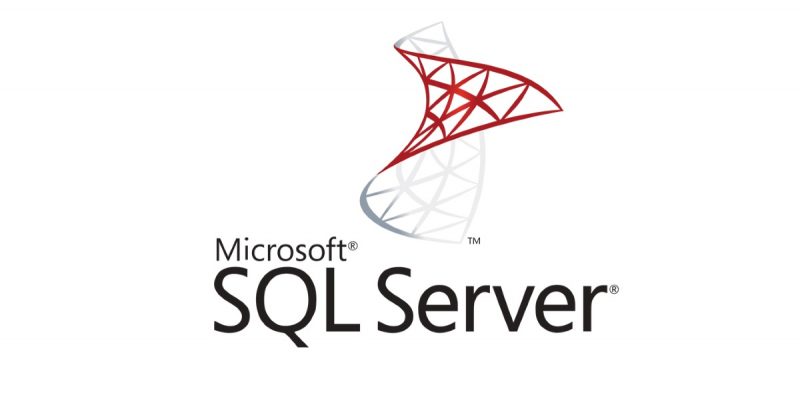Eurofiber has been a supplier of leading digital infrastructure since 2000. With the help of its 70.000-kilometre-long open fiber-optic network that stretches across the Netherlands, Germany, Belgium and France, the company delivers smart, open, future-proof cloud and connectivity solutions to businesses, governments, and non-profit organizations. The company also has its own data centers in the Netherlands and France. Eurofiber lays the foundation for the digital society and has therefore been granted the ‘vital infrastructure’ status by the Dutch government. Eurofiber employs more than 750 people. The head office is located in Maarssen.

Eurofiber: a network of connections
The volume of data traffic continues to grow by double digits every year, moving dozens of Exabytes below ground and through the air. The required infrastructure could be regarded as our economy’s central nervous system. An increasing proportion of this backbone consists of fiber optics. Eurofiber, a provider of modern fiber optic connections, is working with NetRom to modernize the application landscape.
In the Netherlands alone, hundreds of thousands of kilometers of fiber optic cable have been rolled out. Fiber has numerous advantages over copper: lower cost, higher capacity, and more reliable. New fiber-optic connections allow consumers to obtain faster internet services from their internet service providers. However, fiber-optic connections are also an indispensable link in mobile telephony, as they interconnect 4G and 5G antennas.
Eurofiber is one of several companies offering fiber optic connections in several countries, including the Netherlands. Anyone who wants to provide a service over Eurofiber’s network is free to do so. The company serves organizations in the B2B and B2B2C markets: business customers who, in many cases, have consumers as end customers. In addition, Eurofiber works for all kinds of large ‘institutional consumers’ such as universities and hospitals. LVNL, air traffic control for the Netherlands, also does business with Eurofiber.
Eurofiber on the rise
Eurofiber has shown considerable growth in recent years, in part due to fiber optic infrastructure acquisitions abroad. As a result, the Eurofiber Group is now active in the Netherlands, Belgium, France, and Germany. From a commercial perspective, it is vital for Eurofiber to have insight into all the possibilities of their composite network. For the ‘go to market’ of fiber optic connections and management of networks, the company uses a variety of IT systems: business support systems as well as technical operational systems.



Systems for business and systems for technology
“Like almost every other company, we are going through a ‘digital transformation’,” explains Peter Deumer. As Director of Digital Development/Software Development, he is responsible for all software development within the Eurofiber Group. “Our existing business support systems are not fully suitable for facilitating our continued growth. We don’t want our employee numbers to grow as fast as our customer numbers. Four of our in-house software development teams are working on revamping our IT landscape for business support. The largest role is reserved for Salesforce, which encompasses the entire lead-to-cash chain. Solutions such as Salesforce can help automate parts of your process: it’s a box of tools filled with functionality. We can add, configure and program numerous industry-specific functionalities ourselves.”
Development teams
For development of the operational support systems (which support Eurofiber’s technology), Deumer has two development teams up and running. “These teams deal with operational-technical applications for our network engineers. We’re talking about a group of solutions very much adjacent to our core processes,” says Deumer. “These systems not only have to work well together, but also require above-average security. Our services are becoming increasingly complex, so we also require automation in this area – for example, in order to guarantee quality and data standards. As mentioned, it is important for us to automate manual tasks, so we can get more done with the same number of people. We also want to make the work people carry out for us more challenging, relatively speaking.”
Orchestration layer
NetRom plays a key role in these two technical operational development teams. Previously NetRom was a partner of one of Eurofiber’s predecessors (Unet) for which NetRom developed a custom system. Unet was later merged into Eurofiber and NetRom came along as the management party of the outdated legacy system that is still used today.
Deumer continues: “In addition, NetRom has been engaged to develop a POC for a new orchestration layer, a key element in the renewal of our core systems. This orchestration function bridges the gap between our commercial and technical systems. For example, the orchestration layer of a sales order initiates a series of sub-processes for different applications. The system also examines the current situation in the network and then takes various of steps based on that data – such as deploying a new connection or implementing changes correctly.”
“For us, NetRom primarily ensures flexibility, quality and continuity. NetRom’s developers are an integral part of our teams. The advantage of composite teams is the fact that you don’t need to actively manage everything yourself and transfer and integrate everything at the end of a project.”
Peter Deumer, Director of Digital Development/Software Development at Eurofiber
Application rationalization
“For the past year and a half, we have been seriously working on development together. The first items have been delivered and are in production. We are now looking at bringing other products and services under the orchestration layer umbrella: Eurofiber’s operational teams can indicate which processes are time-consuming and need to be automated when it comes to delivery of products and services. “In addition, NetRom is working on a system that brings together all of Eurofiber’s fiber optic assets. This is necessary because with every piece of infrastructure added as a result of an acquisition, specific software was also introduced.”
“Consolidating your IT landscape makes sense for several reasons,” Deumer explains. “From an IT perspective, it saves on management and maintenance costs. It also makes management easier because you don’t need to keep different competencies up to date. For sales, a clear overview is a requirement for doing business effectively. With the new functionality, it will be possible for potential (international) customers to enter a postcode and house number and see which fiber optic services we offer in various locations.”
How is the collaboration going?
The NetRom developers are all part of mixed teams, Deumer explains: “One of the technical-operational teams includes two software developers and a QA specialist; for maintenance and management of the legacy system, we rely on three NetRom colleagues.”
Initially, Deumer had reservations about outsourcing software development when he started at Eurofiber some six years ago. However, his views have changed completely. As far as he is concerned, NetRom’s capacity adds value in several areas. “For us, NetRom primarily ensures flexibility, quality and continuity. NetRom’s developers are an integral part of our teams. The advantage of composite teams is the fact that you don’t need to actively manage everything yourself and transfer and integrate everything at the end of a project.”
Knowledge Retention
“We provide product owners and scrum masters. In addition, NetRom ensures we don’t need to draw up new agreements or conclude contracts for every new functionality. Because they are an integral part of the team, there is no knowledge gap. Knowledge retention is essential for the management of the legacy system; that’s why the fact that NetRom manages this almost entirely independently is an advantage.”
Couldn’t Eurofiber also strengthen its teams in the Netherlands through external hiring? “That can be done, and we have been known to do this, but it’s very difficult to find people willing to maintain an older system, to train them, and then retain them for more than six months. We could hire freelancers, but there’s no guarantee of continuity.”
“NetRom ensures knowledge retention, even when someone moves to a different position. In addition to flexibility, NetRom ensures continuity. Of course, the hourly rates are attractive, when it comes to software development, although this is only a consideration if the quality is good. In short, the discussion about where to assign which tasks regularly recurs. NetRom recently added Salesforce services to its offering, and we are exploring whether this might fit in with Eurofiber’s software development vision for the future. Another example of our partnership.”
Growing together
Deumer is pleased with NetRom for another reason. NetRom has kept growing alongside Eurofiber in recent years. Deumer explains: “At the start of our collaboration, Unet and NetRom were both relatively small. That makes working together easy: flexible, moving between tasks fast, short lines of communication… In recent years, however, NetRom, like Eurofiber, has grown into a large organization. The company has developed significantly and has kept up with Eurofiber’s modern working methods, including the Scaled Agile Framework (SAFe). NetRom developers can easily connect to this method. They are present at all stand-ups and retrospectives and involved in all demos.”
Importantly, albeit not self-evidently, the cultural fit between the partners has also remained good. “Personal relationships and short lines of communication play a role here: parties need to have a connection, and this is certainly the case. There’s also strong commitment from NetRom’s management,” says Deumer. ” We regularly visit each other – which we can never do enough – and get together in person. We do this mainly to bring everyone online, include them in planning or involve them in fundamental changes to a project.”
Silicon Valley
When Deumer visited NetRom in Romania, he saw how good NetRom is at employee engagement. “Developers are all qualified at university level. A great deal is done for employees in order to keep them at NetRom. Much attention is paid to continuous development. The NetRom campus feels a bit like SiliconValley. There’s considerable competition for qualified employees in Romania, so as an employer you need to put your best foot forward.”
About Eurofiber

Services we provided
Looking for reliable software development services?
See how we can help.
- Anneke van der Putten
- Call: +31 (0)30 782 0111
- anneke@netrom.nl
- Ronald Bouwmeister
- Call: +31 (0)30 782 0117
- ronald@netrom.nl
